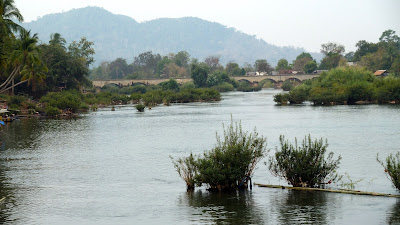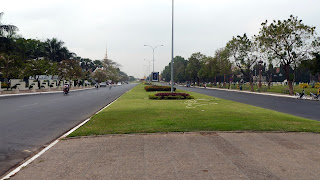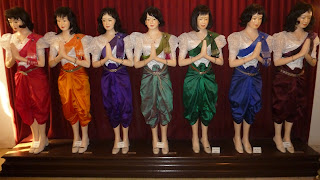This was to be our most elegant accommodation to date; a converted palace that had belonged to a royal prince. Although the decor could best be described as 'shabby gentil' the hotel has managed to retain a real presence and sense of majesty; perched on a hill and overlooking the Xe Dong river and the town of Pakse.
 |
| Champasak Palace Hotel |
A trip up on to the Boloven plateau was a fascinating insight into rural activities and life as well as providing some wonderful scenery. In a long day we visited tea and coffee plantations with an informative coverage by our guide, who had been born and worked in the area before becoming a guide, and sampling of their products; excellent quality. Three waterfalls, not at their most spectacular in the dry season but still impressive, with time for a swim at the last one.
We enjoyed the opportunity to visit an Alak village - one tribe of which there are many in the area - where the guide explained the culture and customs of the tribe. He explained to us that the tribe will only ever speak their own language within the village; although they would need to speak in Laos when outside of the area. They work hard to preserve their own tribal identity and we were warned to observe and respect their village whilst walking around. For example, all huts are built on stilts, providing a large under-building space. We were told not to walk underneath any hut - under any circumstances - since our entry would allow an evil spirit access to their home.
Even amongst the villagers this is respected and usually, only family members may enter this space. They sacrifice an oxen at the time of their New Year, in the belief that this will bring good spirits and prosperity to their village. This celebration is due soon and funnily enough, we couldn't find any oxen in the immediate vicinity (can't think why - can you?).
 |
| ""Don't want to worry you old girl but if they don't find the oxen in time you're next" |

































